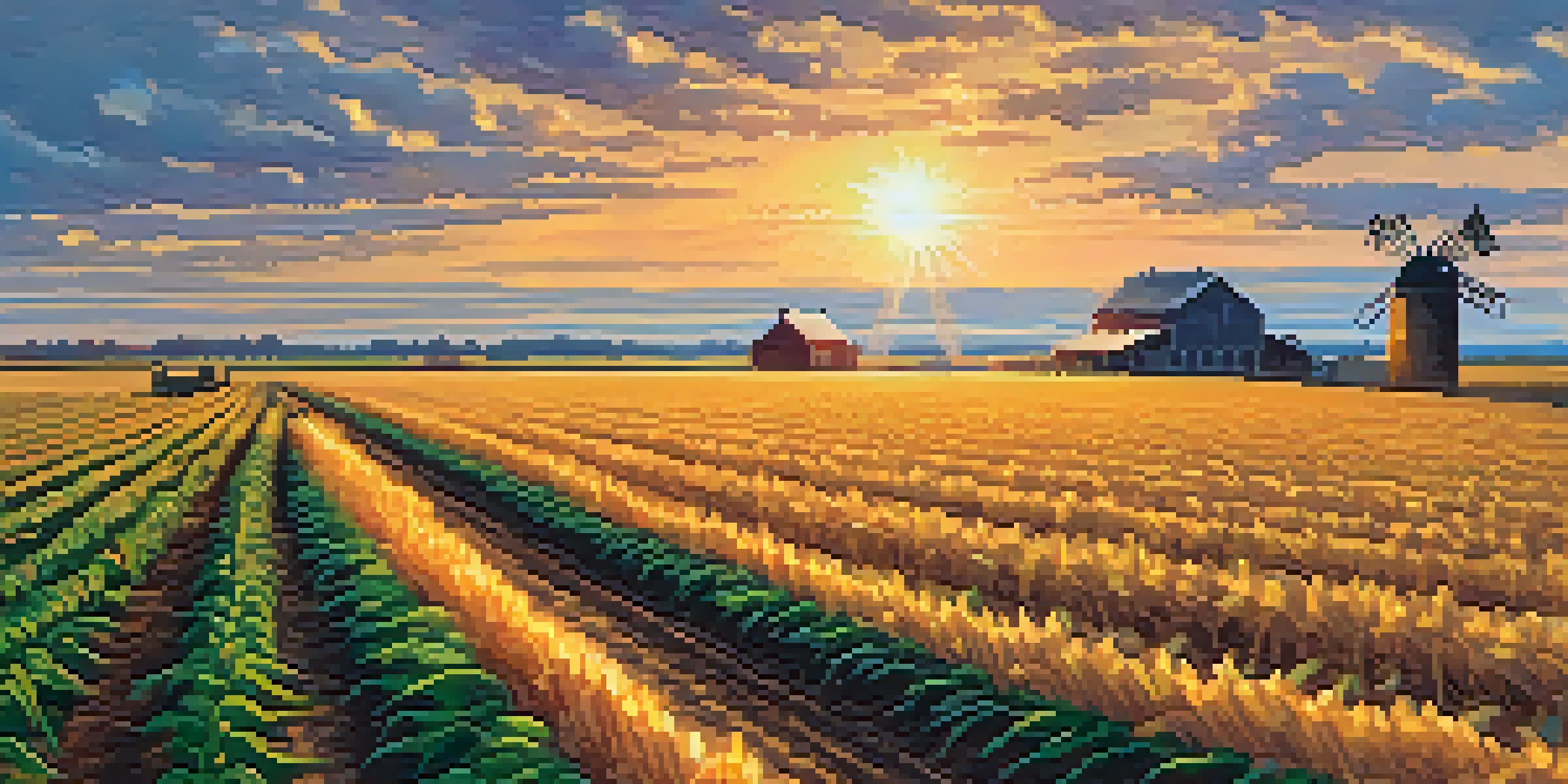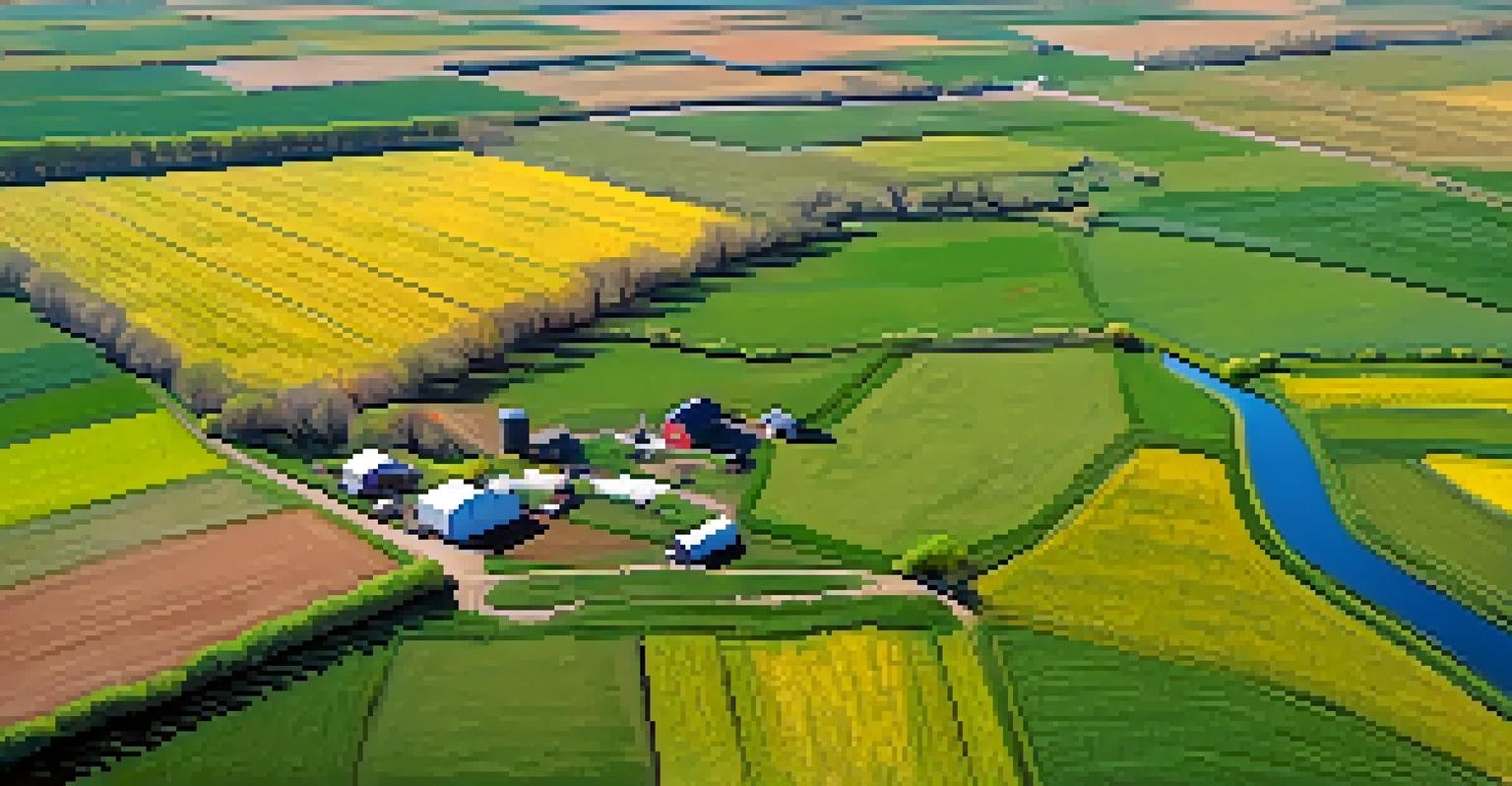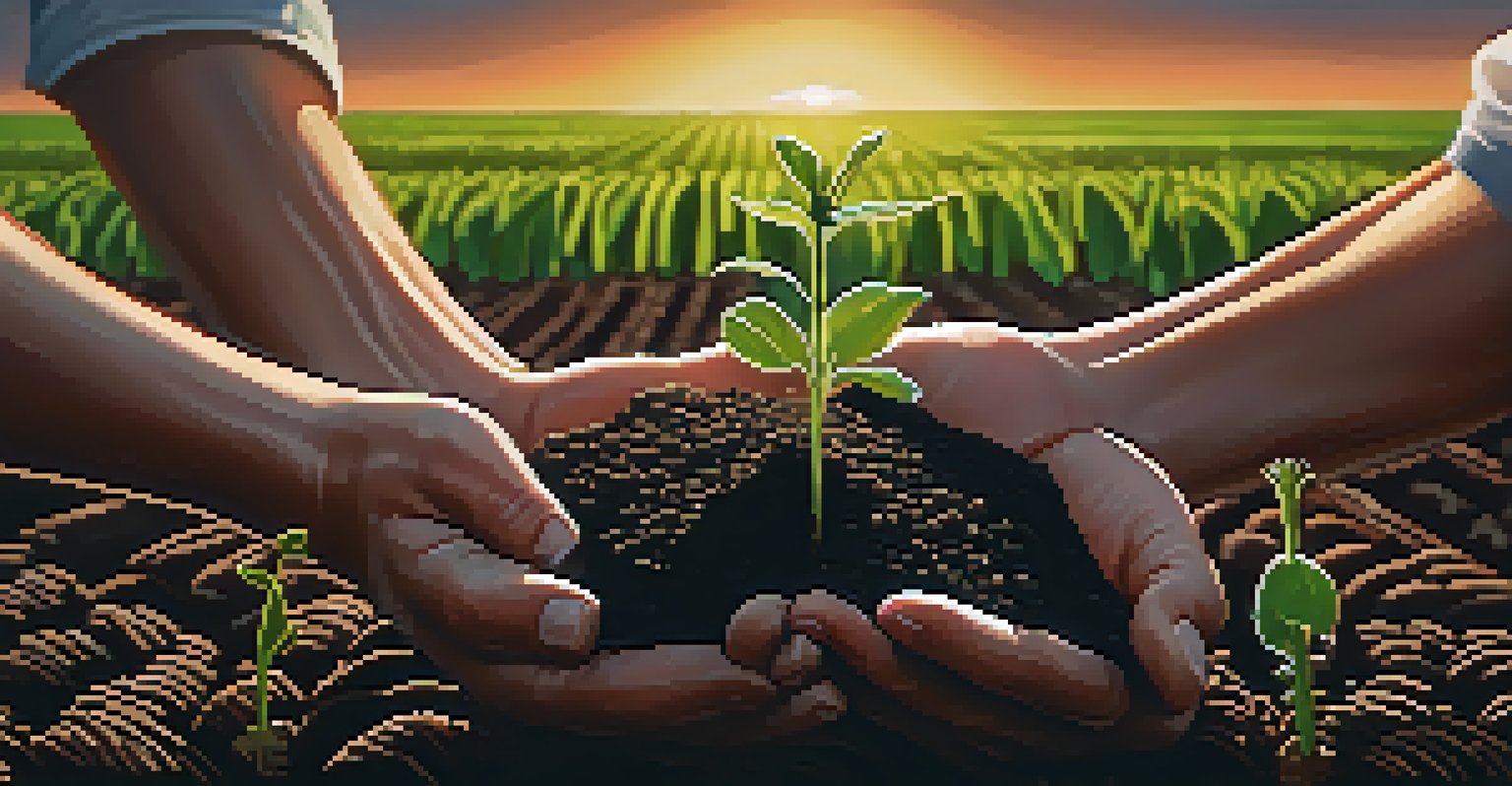Impact of Climate on Kansas Agriculture and Crop Production

Understanding Kansas’ Unique Climate for Agriculture
Kansas is home to a diverse climate that significantly influences agricultural practices. The state experiences a range of weather patterns, from hot summers to cold winters, which can affect crop growth and yield. This climate variability means Kansas farmers must adapt their strategies to optimize production across different seasons and conditions.
The farmer is the one who is actually a part of the climate change solution, and they need to be part of the conversation.
For instance, the state’s central location in the Great Plains exposes it to both droughts and heavy rainfall. Farmers often face the challenge of managing water resources effectively, especially during dry spells. Understanding these climatic conditions is crucial for selecting the right crops and implementing effective farming practices.
Additionally, the climate impacts not just the quantity of crops produced but also their quality. Varietal selection, planting times, and harvest schedules must align with climatic forecasts to ensure optimal growth and market readiness. In essence, a deep understanding of Kansas' climate is foundational for successful agriculture.
The Role of Temperature in Crop Development
Temperature is a critical factor that influences the growth cycle of crops in Kansas. Each crop has an optimal temperature range for germination, growth, and maturation, which, if not met, can lead to reduced yields. For instance, corn thrives in warmer temperatures but can suffer if extreme heat occurs during pollination.

As climate change progresses, Kansas is experiencing shifts in temperature patterns, leading to warmer growing seasons. While this may initially seem beneficial for some crops, it can also increase stress on plants, leading to issues like reduced water availability and pest infestations. Farmers must be vigilant and adjust their practices accordingly to manage these changes.
Kansas Climate Shapes Farming Strategies
Understanding Kansas' diverse climate is crucial for farmers to adapt their practices and optimize crop yields throughout varying weather conditions.
Moreover, the impact of temperature extends beyond individual crops to entire farming systems. Farmers may need to consider crop rotation and diversification to mitigate risks associated with rising temperatures. This adaptability is essential not only for current farmers but also for future generations looking to sustain agricultural productivity.
The Impact of Precipitation Patterns on Farming
Precipitation is another vital element influencing agriculture in Kansas. The state typically receives around 30 inches of rainfall annually, but this can vary significantly from year to year. Changes in precipitation patterns can lead to either drought conditions or excessive flooding, both of which pose challenges for farmers.
Sustainable agriculture is a way of farming that meets the needs of the present without compromising the ability of future generations to meet their own needs.
Droughts can severely limit water availability for crops, necessitating the use of irrigation systems, which can be costly and labor-intensive. On the other hand, heavy rainfall can lead to soil erosion and crop damage, creating a dilemma for farmers who must navigate these unpredictable weather events. Understanding and adapting to these patterns is crucial for effective crop management.
Furthermore, the timing of rainfall is just as important as the amount. For example, if rains do not coincide with critical growth stages, such as planting or flowering, crop yields can diminish significantly. Hence, Kansas farmers are increasingly investing in technology and practices that enhance their ability to predict and respond to precipitation changes.
The Consequences of Drought on Crop Yields
Drought has emerged as a significant threat to crop production in Kansas, particularly in recent years. Extended periods of low rainfall can lead to reduced soil moisture, which is essential for healthy crop growth. This can result in lower yields and, in some cases, complete crop failure, leaving farmers to contend with financial losses.
Farmers are responding to these challenges by adopting drought-resistant crop varieties and implementing water conservation practices. Techniques such as no-till farming and cover cropping can improve soil health and moisture retention. Additionally, many are exploring advanced irrigation methods to maximize efficiency and minimize water waste.
Drought Drives Need for Resilience
As droughts increase, Kansas farmers are adopting drought-resistant crops and sustainable practices to maintain productivity and reduce financial risks.
The economic implications of drought are profound, affecting not only farmers but also local economies reliant on agriculture. As drought frequency and severity increase due to climate change, the need for sustainable farming practices becomes increasingly urgent. Building resilience through innovation and education is essential for the future of Kansas agriculture.
How Extreme Weather Events Affect Crop Production
Extreme weather events, such as tornadoes, hailstorms, and floods, are becoming more common in Kansas, and they can wreak havoc on crops. These sudden and severe conditions can destroy fields within minutes, leading to significant losses for farmers. The unpredictability of these events makes planning for seasonally successful crops even more challenging.
Farmers often discuss the 'farming lottery'—the idea that, despite all their preparations, they are at the mercy of the weather. This reality underscores the importance of having insurance and contingency plans in place. Many are investing in resilient infrastructure, such as hail-resistant crops or protective netting, to safeguard against these extreme conditions.
Moreover, the agricultural community is increasingly coming together to share knowledge and resources to combat the effects of extreme weather. By pooling information and support, farmers can enhance their resilience and adaptability. As climate change continues to reshape the landscape, collaboration will be key to ensuring the future viability of Kansas agriculture.
The Influence of Climate Change on Crop Choices
As the climate continues to change, Kansas farmers are reevaluating which crops to grow. Traditional crops may no longer thrive under new conditions, prompting a shift towards more adaptable and resilient varieties. This transition is not just about survival; it also represents an opportunity for innovation in the agricultural sector.
For example, some farmers are experimenting with drought-tolerant varieties of corn and soybeans, which can withstand less water while still providing decent yields. Others are exploring alternative crops like sorghum or millet that may be better suited to the changing climate. This shift requires a willingness to embrace change and experiment with new agricultural practices.
Sustainable Practices Are Essential
Embracing sustainable agricultural practices not only mitigates climate change impacts but also enhances soil health and meets rising consumer demand.
Ultimately, these adaptations can lead to enhanced sustainability and resilience in the agricultural landscape. By choosing crops that align with current climate realities, Kansas farmers can better secure their livelihoods while contributing to a more stable food supply. As the agricultural landscape evolves, continuous education and innovation will be essential.
The Importance of Sustainable Practices in Agriculture
Sustainable agricultural practices are becoming increasingly vital in the face of climate-related challenges in Kansas. These practices not only help mitigate the impacts of climate change but also promote long-term soil health and biodiversity. Techniques such as crop rotation, cover cropping, and reduced tillage can enhance resilience to climatic extremes.
By adopting sustainability, farmers can improve their yields while minimizing environmental impacts. For instance, integrating livestock with crop production can create a closed-loop system that benefits both sectors. More farmers are recognizing that sustainability is not just a trend; it’s essential for the future of agriculture in Kansas.

Additionally, consumer demand for sustainably produced food is on the rise, providing an economic incentive for farmers to shift their practices. As awareness grows, farmers are finding new markets for their products, which can help offset the costs associated with transitioning to more sustainable methods. Embracing sustainability is not only a responsible choice but also a smart business strategy.